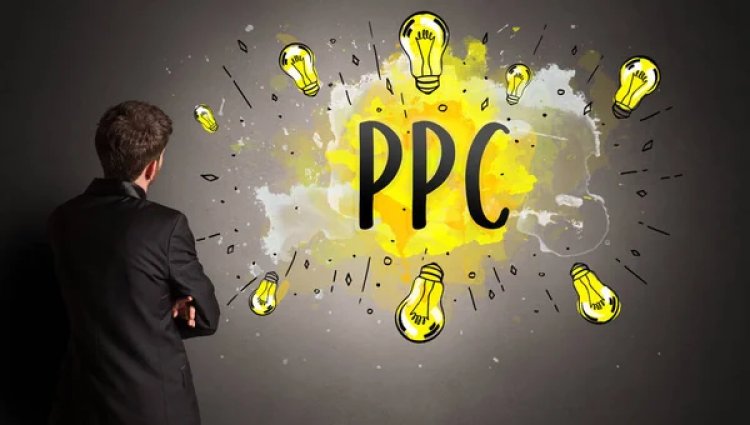Pay Per Click (PPC) Advertising: Your Ultimate Guide to Success
Unlock the power of Pay Per Click (PPC) advertising with our comprehensive guide. Learn how PPC works, its advantages, and how to create successful campaigns. Get instant visibility, target your audience, and achieve measurable results.

Introduction: Pay Per Click (PPC) advertising is a digital marketing strategy where advertisers pay for each click on their ads. In this guide, we'll break down what PPC is, how it works, and how you can use it to boost your online presence and drive business growth.
What is Pay Per Click (PPC)?
Definition:
PPC is a digital advertising model where advertisers pay a fee whenever someone clicks on their ads. It's about buying website visits instead of earning them organically.
Example: Imagine you're a shoe store owner, and you want to promote a new line of running shoes. You create an ad for these shoes, and you pay a small fee each time someone clicks on your ad, leading them to your online store.
Key Elements of PPC:
- Ad Copy: Crafting compelling ad text to grab users' attention.
- Keywords: Selecting relevant words and phrases to trigger your ads.
- Bid Amount: Deciding how much you're willing to pay for each click.
- Quality Score: A score that measures the quality and relevance of your ads.
How Does PPC Work?
Search Engines and Ad Networks:
PPC ads are displayed on search engines like Google or on various websites within ad networks. Advertisers bid on keywords to have their ads shown to users searching for those terms.
Example: You're a travel agency advertising vacations. You bid on the keyword "exotic beach vacations", so your ad appears when people search for that phrase on Google.
The Auction System:
In PPC, there's an auction to determine which ads are shown. It considers bid amounts, ad quality, and relevance. High-quality ads with competitive bids often get top placements.
Example: Suppose you and a competitor both bid on "luxury watches". If your ad has better quality and a higher bid, your ad is likely to be displayed above your competitor's.
Advantages of PPC Advertising
Instant Visibility:
PPC provides immediate visibility, as your ads can show up at the top of search results as soon as you launch your campaign.
Example: You've just launched a new line of smartphones. With PPC, your ads can appear on Google right away when people search for "latest smartphones".
Targeted Advertising:
You can reach specific audiences by selecting the right keywords and demographics, ensuring your ads are seen by those interested in your products or services.
Example: You sell high-end makeup products. With PPC, you can target your ads to reach women aged 25-45 who are interested in cosmetics.
Measurable Results:
PPC offers detailed metrics, enabling you to track performance and make data-driven decisions.
Example: You run a PPC campaign for your online courses. You can measure the exact number of clicks, conversions, and the cost associated with each sale.
Creating a Successful PPC Campaign
Keyword Research:
Use tools like Google Keyword Planner to find valuable keywords relevant to your business.
Example: If you're a fitness trainer, you might research keywords like "online fitness classes" or "personal trainer services".
Ad Copywriting:
Craft persuasive ad text that encourages users to click, highlighting what sets your product or service apart.
Example: If you're a software company, your ad might emphasize "user-friendly interface" or "24/7 customer support".
Bid Management:
Set your budget and bid amounts carefully to balance exposure with cost-effectiveness.
Example: You're a restaurant owner, and you allocate more budget to the keywords that bring in diners looking for "fine dining" rather than "fast food".
Landing Page Optimization:
Ensure your landing pages are relevant and user-friendly to maximize conversion rates.
Example: If you're an e-commerce store, your ad for "running shoes" should lead to a landing page displaying a variety of running shoes for purchase.
Monitoring and Optimization
Continuous Monitoring:
Regularly review your campaign's performance by checking metrics like click-through rates (CTR) and conversion rates.
Example: If you're running an ad for "affordable web design", monitor your CTR and adjust your ad if it's underperforming.
A/B Testing:
Experiment with different ad variations and keywords to discover what works best.
Example: Test two versions of your "vacation deals" ad: one highlighting discounts and another focusing on destinations to see which gets more clicks.
Budget Adjustments:
Adapt your budget based on the performance of specific keywords or ads.
Example: If your "smart home devices" ad is generating excellent results, consider increasing your budget for it.
Conclusion
PPC advertising is a dynamic tool for enhancing your online presence and achieving business goals. With instant visibility, targeted advertising, and measurable results, PPC is an essential part of your digital marketing strategy. By understanding the basics and implementing best practices, you can make the most of PPC and watch your business thrive in the online landscape. Start your PPC journey today, and let it drive your business towards success.
What's Your Reaction?





































































































